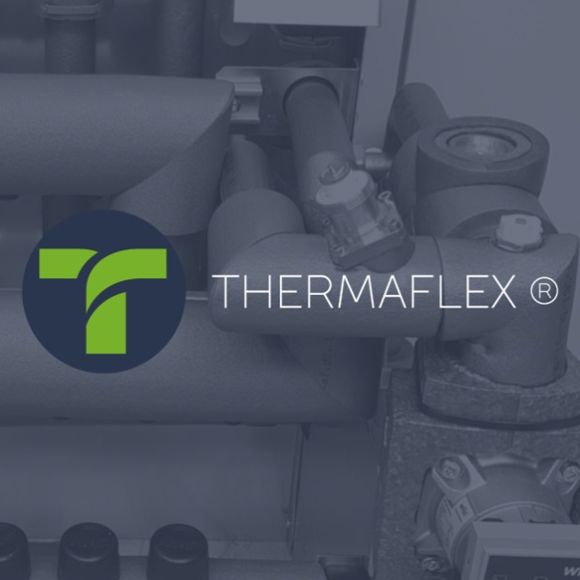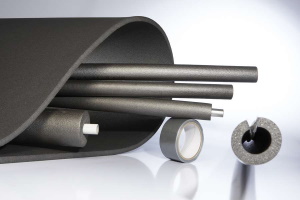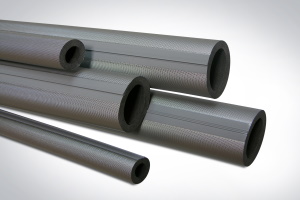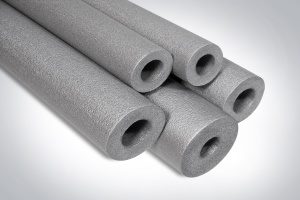Reading time: 3 minutes
How to reduce heating costs by correctly insulating your heating system
With the ongoing energy crisis, heating costs have skyrocketed, and winter is just around the corner. Now, it’s time to save energy and ensure that your installations run efficiently. When building or renovating a house, we usually focus on insulating the windows or walls, forgetting there are other components affecting the efficiency of your building. If your heating installation is poorly insulated, you risk losing heat and money. By properly insulating, however, you can protect your installation, your wallet, and the environment. In this article, we explain how you can insulate a heating installation and reduce heating costs significantly.
Save up to 30% on heating costs
A good insulator can save you up to 30% on your heating cost. By insulating your heating installation, you make sure not to lose heat on the way from the source to the rooms. Heat loss causes an extra energy demand, which comes with unnecessary additional running costs for years. Investing in modern insulation materials also extends the lifespan of any system and avoids the need for costly installation replacements, and reduces the number of potential repairs.

What is good insulation?
Firstly, “good insulation” ensures heat delivery from the source to the point of consumption. Good insulation material has a low thermal conductivity coefficient lambda (ʎ), is easy to apply and complies with the local building regulations.
What you need to know about the lambda value (ʎ)
It is important to note that the lambda value, the coefficient of thermal conductivity, is about the heat flow through the material. The lower the thermal conductivity, the less heat flow through the material, and the better the insulation. Since the temperature influences the thermal conductivity, the default temperature to determine ʎ for insulation is usually 40°C. Make sure to compare ʎ of different insulation products at the same temperature value! You can find these values in the technical data sheets of all our insulation materials.
Calculate the necessary insulation thickness
As warm water runs through a pipe, it loses its heat to the surroundings if its temperature is higher than the surrounding air. As pipes are generally made from metals like steel, copper, etc., which are excellent conductors of heat, heat loss will be substantial and very costly. Heat loss depends on the following:
- diameter of the pipe
- medium temperature
- length of the pipe
- surrounding temperature
Suppose your insulation material is too thin (or applied incorrectly). In that case, your system will lose heat, and as a result, your heating costs will increase.
Use our free insulation calculator to define the required thickness and calculate your energy and financial savings for heating or cooling applications.

In addition to selecting insulation with the correct lambda (ʎ) thermal conductivity value, you should pay attention to the following:
- The installation of your insulation material must meet the local building regulations on the required insulation thickness at different heating system parts. The minimum insulation thickness for conductors depends on the pipe’s internal diameter, which is measured in millimeters (mm).
- Installing insulation should ALWAYS be carried out by professional installers.
Choosing the right insulation material
High-quality insulation ensures the efficiency of your system. When choosing insulation materials, you want a good lambda value, the required thickness, and a material that does not absorb moisture. Each application comes with unique requirements for the material.
Finally, you want to select an insulation material with a long product lifecycle and low environmental impact. Polyethylene (PE) foam insulation meets these sustainability requirements.
Thermaflex offers a wide range of sustainable insulation tubes, coils, and sheets for heating- and cooling systems. Using professional equipment, you can apply these products directly to your application or cut them in any desired shape. In addition, Thermaflex offers so-called pre-fab (ready-to-use) elements for the more challenging parts of the system. These include different elbow and T-pieces.
Discover our Insulation Productlines

Ton van Soest
Technical Insulation Specialist
Ask our technical insulation expert
Need help? Feel free to consult our technical specialist and start saving energy! Please send us the necessary information, so we can help you with making the right calculation!
(e.g. Pipe material, pipe diameter, pipe length, ambient temperature, medium temperature.)





